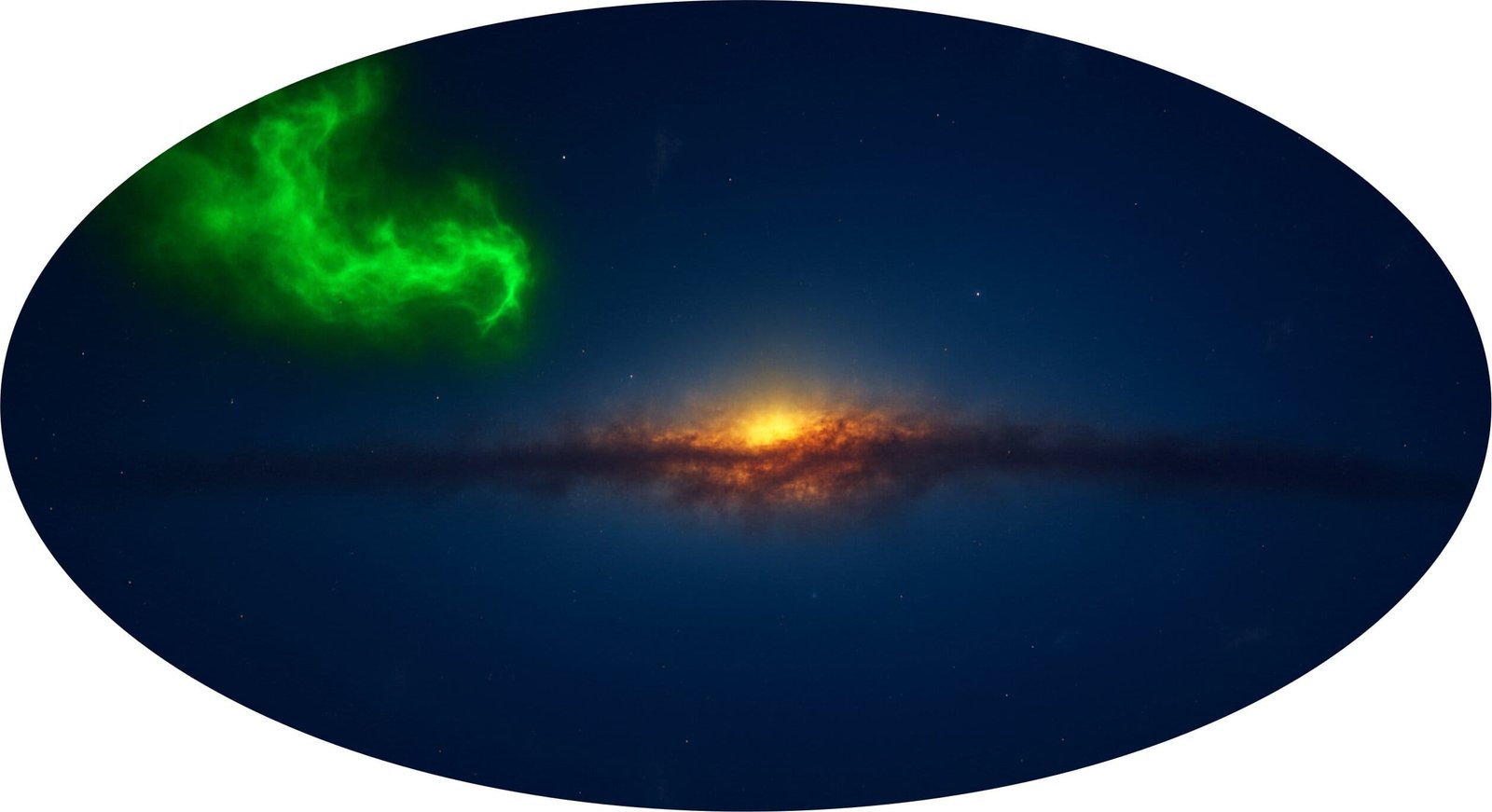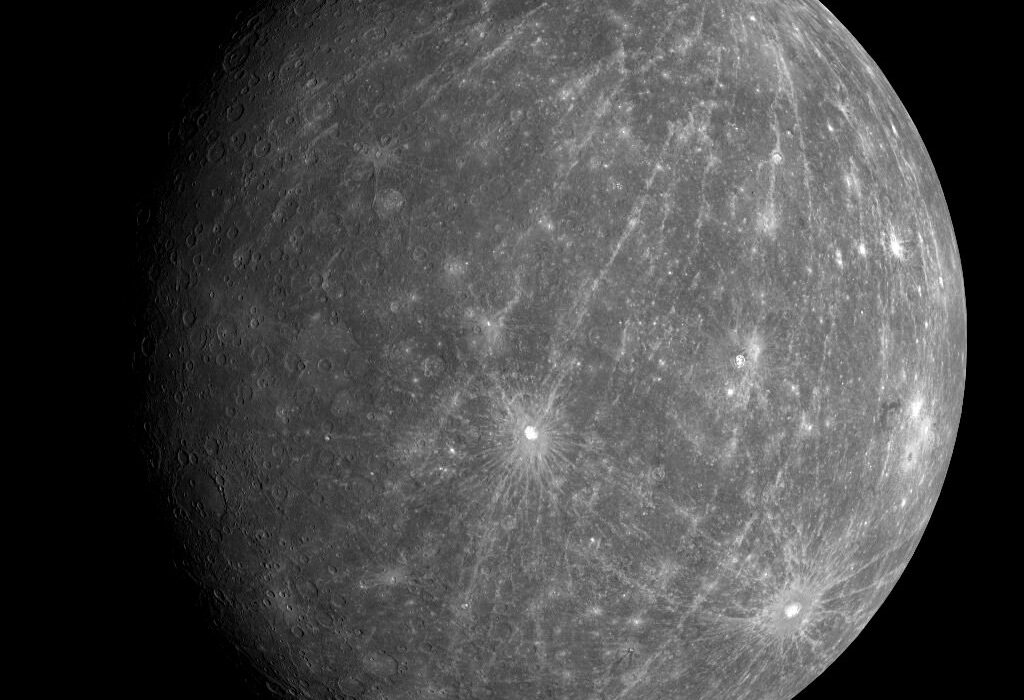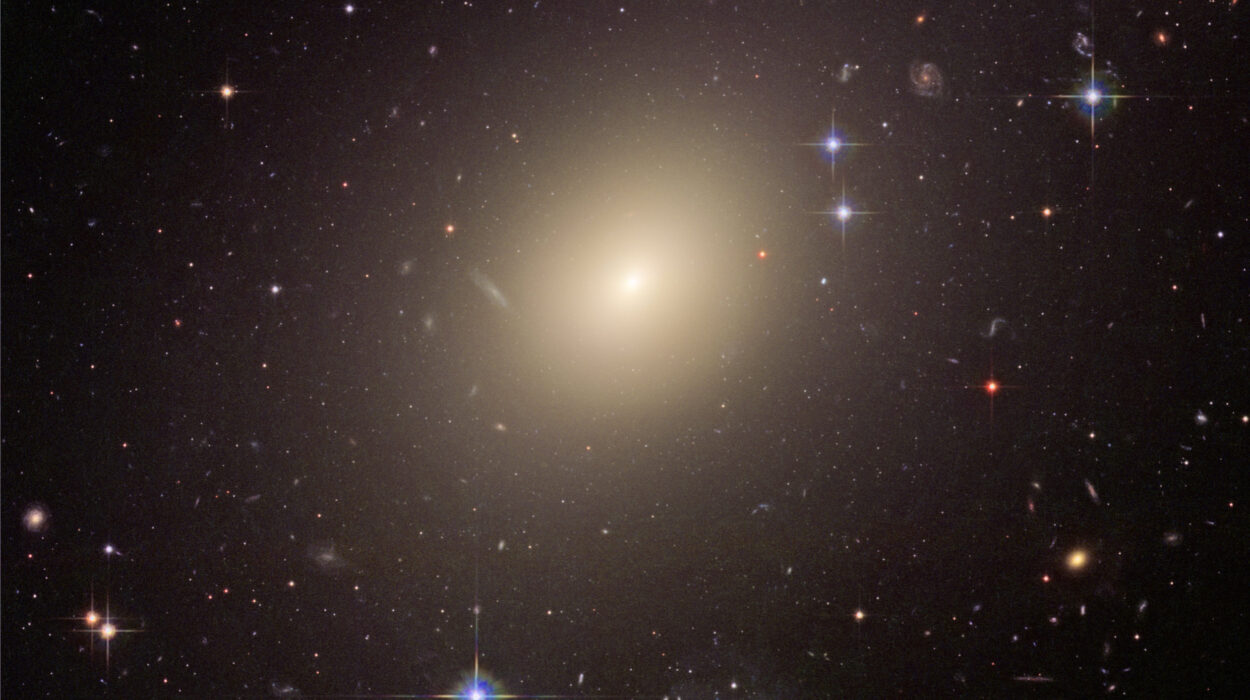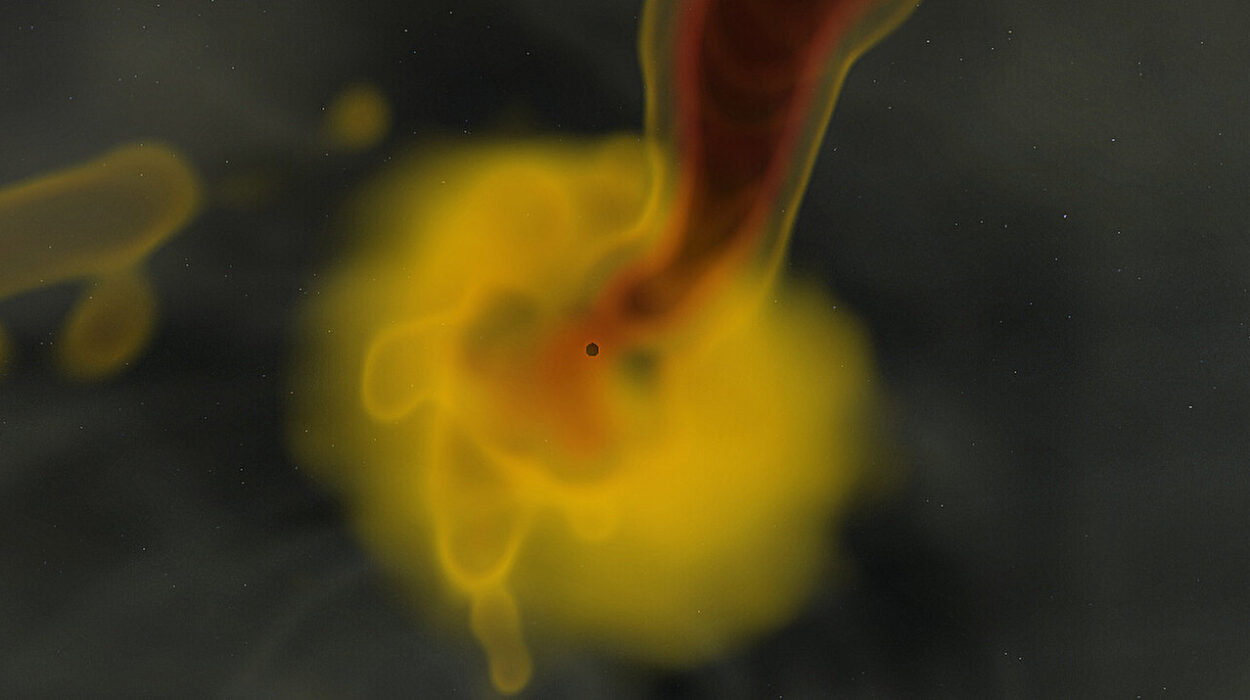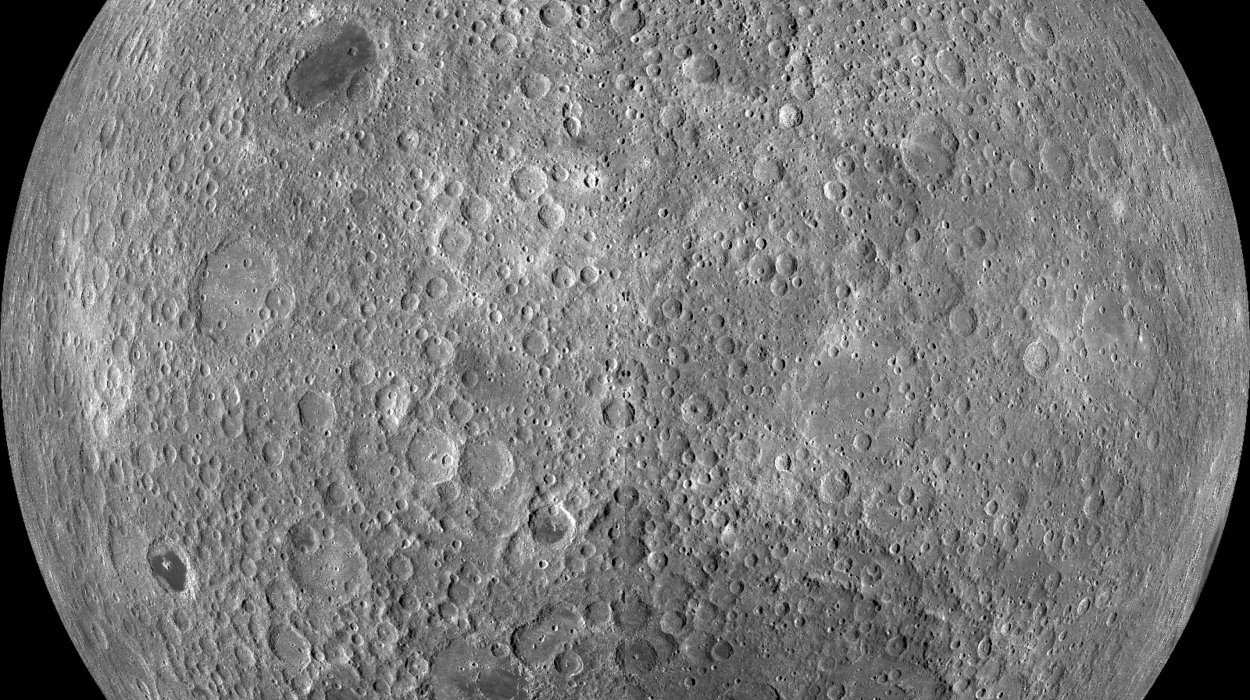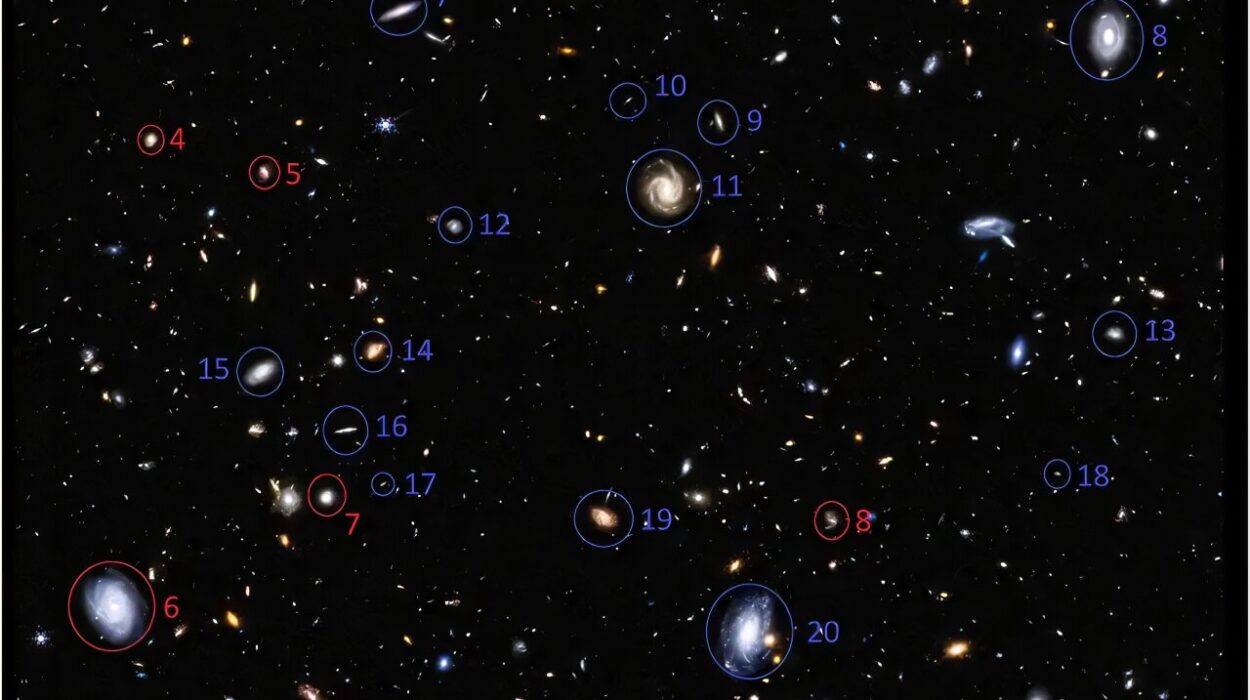In the lonely, quiet outskirts of our galaxy—far from the glowing chaos of stars, nebulae, and black holes—astronomers turned their gaze toward what should have been emptiness. There, in the silence beyond the galactic plane, they encountered something astonishing. A massive, high-speed cloud of atomic hydrogen, drifting 50,000 light-years from Earth, was not floating aimlessly as once imagined. It was alive with motion, etched with threads of turbulent gas, and whispering secrets of cosmic evolution long before the first stars were born.
The object, named G165, is a very-high-velocity cloud (VHVC) rushing through the galactic halo at 300 kilometers per second. Using the unparalleled sensitivity of the Five-hundred-meter Aperture Spherical radio Telescope (FAST)—the largest filled-aperture radio telescope on Earth—a team of astronomers led by the Shanghai Astronomical Observatory of the Chinese Academy of Sciences discovered something that defied expectations: an intricate, dynamic, and multilayered web of filaments, twisting like galactic silk across the void.
For years, astronomers thought such clouds might be unremarkable wisps of gas, relics of the galactic halo drifting passively through space. But what the FAST telescope unveiled in G165 was a cosmos within a cloud—a delicate dance of turbulence, magnetism, and motion. And in that structure lies a clue to one of the deepest questions of astronomy: how does the raw material of the universe organize itself into something as wondrous as stars?
A Window into the Earliest Stages of Cosmic Structure
VHVCs like G165 are rare in the Milky Way. Unlike the more familiar high-velocity clouds (HVCs), which often reside nearer to the galactic disk and are influenced by stars, supernovae, and gravitational collapse, VHVCs exist in relative isolation. Far above the galactic plane and free from the usual celestial noise, G165 offers a unique laboratory—a near-pristine canvas on which the earliest strokes of cosmic structure are painted.
And what makes this discovery all the more compelling is the composition of the cloud. Rather than showing the usual mix of warm and cold gas found in galactic environments, G165 appears to consist almost entirely of the warm neutral medium (WNM). This is a diffuse, low-density form of hydrogen gas with temperatures of around 6,000 to 10,000 Kelvin. Unlike the cold neutral medium (CNM), which is prone to gravitational collapse and star formation, the WNM was often seen as passive, unstructured, a kind of interstellar filler.
But now, that assumption is being torn apart.
Thanks to FAST’s sensitivity and resolution, astronomers could map the HI 21-centimeter line emission in unprecedented detail. What emerged was not a shapeless haze, but a shockingly intricate map of filaments—elongated structures of gas, knotted and interlaced, stretching across multiple layers of velocity and density. The cloud wasn’t just drifting through space. It was churning, vibrating, interacting. Every line traced in the data told a story of energy in motion.
Supersonic Turbulence and the Whisper of Magnetic Fields
To understand the ghostly architecture etched across G165, astronomers turned to powerful simulations. By combining the mathematics of fluid motion with the physics of magnetic fields—a discipline known as magnetohydrodynamics—they reconstructed the internal dynamics of the cloud.
What they found was as elegant as it was profound. Supersonic turbulence, without the aid of gravity, could explain the filamentary complexity. The interplay of gas motion and magnetic pressure alone was sufficient to weave the structures seen in the data. Like wind twisting silk in weightless space, turbulent flows stretch and fold gas into ribbons and sheets. Magnetic fields then guide and mold those patterns, shaping them into the tangled lattice that FAST uncovered.
This is revolutionary because it rewrites the assumed script of how structure emerges in space. We often think of gravity as the master architect of the universe. It draws gas into denser knots, fuels the birth of stars, and binds galaxies together. But here, in G165, gravity has little influence. And yet, structure thrives.
The simulations didn’t just match the shapes of filaments. They also reproduced the velocity “wiggles,” the skewed density profiles, and the asymmetric layering observed in the cloud. These aren’t just decorative curiosities—they are the fingerprints of underlying physics at work, shaping the very fabric of the interstellar medium long before stars get involved.
A Silent Prelude to Stellar Birth
What, then, is the cosmic role of G165 and clouds like it?
Though it lies far from the galaxy’s active star-forming regions, this cloud may be laying the groundwork for future stellar nurseries. Interstellar gas doesn’t simply collapse into stars overnight. It undergoes a long journey of organization, cooling, compression, and chemical enrichment. VHVCs might represent the early scaffolding of this process: an architectural blueprint shaped by turbulence and magnetic tension.
In environments like G165, we see a rehearsal of structure—filaments forming not because of gravitational pull, but because of the sheer chaos of motion on cosmic scales. These filaments could eventually slow down, cool, and condense. In time, they might fall toward the galactic disk, merge with denser clouds, and feed future star formation. If so, then what we’re observing isn’t a cosmic backwater—it’s a vital tributary in the river of galactic evolution.
Moreover, because G165 is relatively free of contaminating radiation and stellar activity, it allows astronomers to test theories of gas dynamics in their purest form. It is a control sample written across light-years, offering an unclouded glimpse into how the universe self-organizes.
FAST’s Silent Symphony
None of this would have been visible without FAST. The 500-meter dish, nestled in the karst depression of Guizhou province, acts as an ear pressed to the cosmos, sensitive enough to detect the faintest whispers of hydrogen gas. It doesn’t see light. It hears it—in the radio frequencies of the HI 21 cm line, which traces neutral hydrogen.
This line is not only ubiquitous in the universe, it is ancient. Neutral hydrogen formed shortly after the Big Bang and continues to serve as the canvas upon which cosmic evolution is painted. Through FAST’s lens, this hydrogen becomes a storybook. Every wiggle in the spectrum, every Doppler shift in the signal, tells of gas moving, colliding, expanding, or curling in upon itself.
And in G165, the book has only just begun to be read.
A Universe More Alive Than We Imagined
The discovery of G165’s filamentary structure is not just about one cloud. It challenges a broader assumption in astrophysics—that without gravity or star formation, gas in space is largely passive. It shows us that motion itself—raw, undirected, ungravitational motion—can bring about beauty and order.
It also invites deeper philosophical questions. If turbulence and magnetic fields can sculpt such complexity in a cloud drifting alone in space, then how much more vibrant might the rest of the universe be? How many structures lie hidden in the dark, waiting only for the right instruments to reveal them?
And, most tantalizingly, could clouds like G165 be more common than we think? If so, they may be the missing links in our models of galactic evolution, bridging the gap between diffuse intergalactic gas and the molecular clouds that birth stars.
Looking Forward into the Fog of Hydrogen
As astronomers continue to explore G165 and other VHVCs, the door opens wider to a new kind of astrophysical understanding. Future radio telescopes—like the Square Kilometre Array (SKA)—will build on FAST’s legacy, probing deeper and with even finer detail. What we’ve seen in G165 may be only a taste of the hidden choreography playing out across galactic halos.
But for now, it is enough to be reminded that even in the furthest reaches of space, far from light and life as we know it, there is movement. There is structure. There is purpose, not in a conscious sense, but in a physical one—a language of patterns written by the timeless forces of nature.
G165 drifts in the darkness, not as a ghost of what once was, but as a herald of what might become.
Reference: Xunchuan Liu et al, A network of velocity-coherent filaments formed by supersonic turbulence in a very-high-velocity H i cloud, Nature Astronomy (2025). DOI: 10.1038/s41550-025-02605-8
